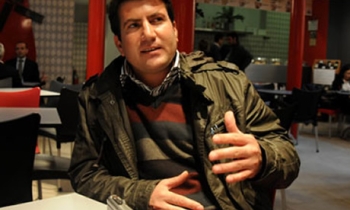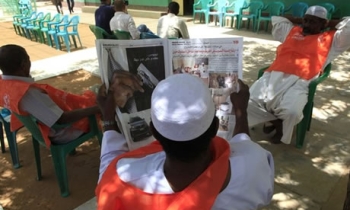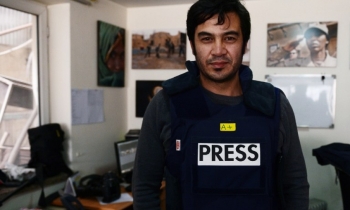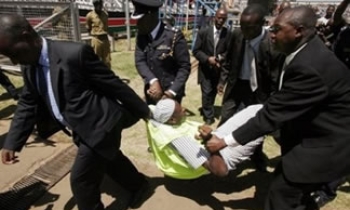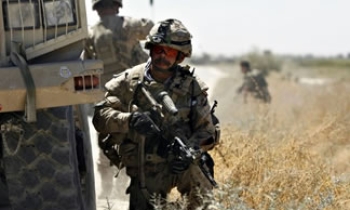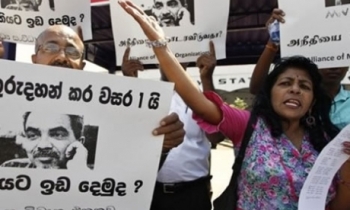The abduction and torture of two Brazilian journalists investigating paramilitaries in Rio de Janerio's sprawling slums have brought to the fore the increasing threats to lives of journalists in the city's favelas (shanties).
A reporter, a photographer and their driver working undercover for the paper in Batan, a shantytown located in the western outskirts of the city, were abducted from a local bar by several armed men in ski masks on the night of May 14, according to the New York-based Committee to Protect Journalists (CPJ).
The assailants then drove to a small house that the O Dia team had rented in Batan; there, the team’s reporter was forced at gunpoint into a car with the two others, O Dia said in its special report. O Dia did not identify the journalists or the driver for fear of retaliation.
The journalists and the driver were taken to a nearby house, where the masked men beat them repeatedly, gave them electric shocks, put plastic bags over their heads, and threatened to kill them, O Dia reported. At least one of the attackers identified himself as a member of the local police. The assailants mentioned details of the reporters’ personal lives, according to the report. Around 4:30 am, after having been held for at least seven hours, the O Dia journalists were released on the condition that they not identify their captors.
O Dia Director Alexandre Freeland said in a statement published in the paper that the reporters were receiving medical and psychological treatment. According to Freeland, O Dia informed Governor Sergio Cabral and local police about the matter. In its report, the paper said it delayed publicising the abduction so as not to interfere with the police investigation.
Cabral said on Sunday that the reported abduction was “absolutely intolerable” and that authorities were conducting a rigorous investigation, according to press reports. There is an ongoing investigation in the internal affairs department of Rio de Janeiro’s police, the Rio State Public Security Department was quoted saying in local press reports.
According to O Dia, the team had been working in Batan since May 1. They were investigating how paramilitary groups run Batan, charging residents for protection, controlling local politics and illegally selling gas and cable television.
“We are appalled by O Dia’s allegations that two of its journalists and a driver were kidnapped and brutalised,” said CPJ’s Americas Senior Programme Coordinator Carlos Lauría. “Brazilian authorities must thoroughly examine allegations linking the captors to local police, and they must bring those responsible for this crime to justice.”
Six years ago today, Tim Lopes, an award-winning reporter for TV Globo, disappeared in Vila Cruzeiro, another poor Rio de Janeiro neighbourhood, while working on a report about parties that were hosted by drug traffickers and that allegedly involved the sexual exploitation of minors. Lopes was found dead 10 days later. He had been tortured and slain with a sword.
In 2005, six defendants were tried, convicted, and sentenced to more than 20 years in prison apiece. A seventh defendant, whose testimony helped convict the other six men, was later sentenced to nine years and four months in prison. The mastermind was also convicted and received a 28-year sentence.
The Associated Press reported that militias have moved into nearly 15 per cent of Rio de Janeiro’s poor neighbourhoods during the last year, charging residents up to US$14 a month for protection against violent drug gangs. The militias are made up of active and former police officers, firefighters, private security officers and prison guards, AP said.
Paramilitary groups, often referred to as "militias" locally, are normally made up of off-duty or former police officers. They have spread in the city's violence-plagued slums in recent years, offering "protection" to residents from drug gangs, a Reuters report said. They are now believed to control more than 10 percent of the city's more than 600 slums, often replacing the gangs' criminal networks with their own.
The militias, which are generally commanded by active or retired police officers, rule 63 favelas, the Inter-Press Service (IPS) said in a report. Once there were 122 groups, but have been reduced to less than 100 since early 2007. Other favelas are under the control of drug trafficking gangs. The militias emerged under the pretext of fighting drug trafficking, but became new players in the drug trade, and imposed their own rules extorted at will.


